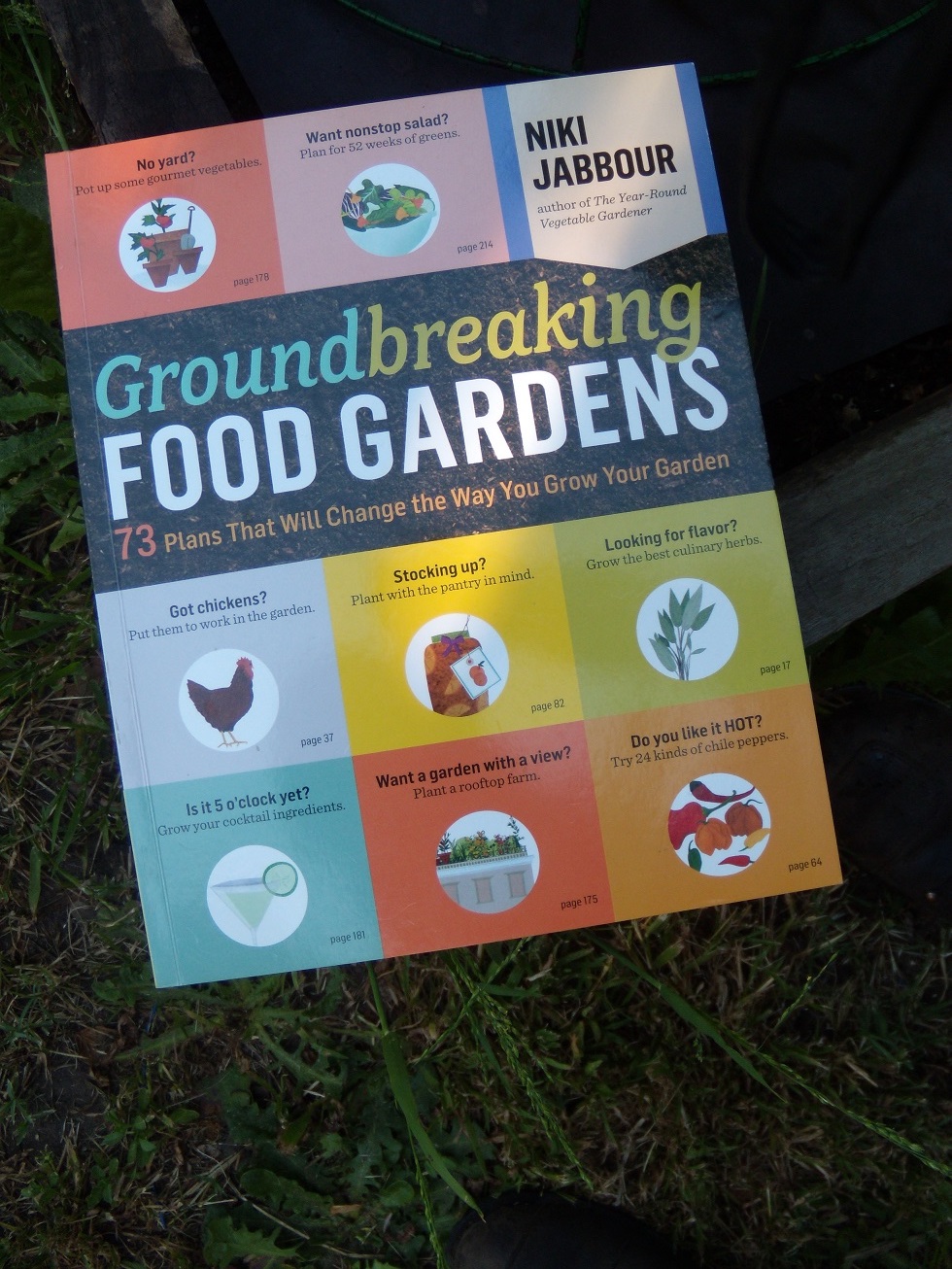Review by Margie Siegal
 A garden in the shape of a pizza? A chicken run as a garden design element? A formal (but edible) garden? Nikki Jabbour dares to think outside of the terra cotta pot and, in Groundbreaking Food Gardens, (Storey, 2014) presents 73 plans for not quite ordinary food gardens. She explains how people grow figs – in Canada. She interviews people who learned to grow food from Chinese fathers and Italian grandmothers, people who re-purpose pallets as vertical gardens, and people who incorporate architectural elements in their show-worthy vegetable gardens.
A garden in the shape of a pizza? A chicken run as a garden design element? A formal (but edible) garden? Nikki Jabbour dares to think outside of the terra cotta pot and, in Groundbreaking Food Gardens, (Storey, 2014) presents 73 plans for not quite ordinary food gardens. She explains how people grow figs – in Canada. She interviews people who learned to grow food from Chinese fathers and Italian grandmothers, people who re-purpose pallets as vertical gardens, and people who incorporate architectural elements in their show-worthy vegetable gardens.
The book starts off with an introduction to the 73 different gardeners who contributed ideas, information and garden plans to the book. Then it dives into a separate chapter for each gardener, with diagrams, suggestions for the best vegetable varieties for each garden plan, and sidebars on topics related to each chapter. For example, Amy Stewart, a well known author, devotes an entire garden to cocktail themed plants, including black currants, celery, edible flowers, and mint. An apple tree contributes cider, while a cherry tree, blackberries and even watermelon vines contribute trendy cocktail ingredients. The chapter ends with two killer cocktails, made from spirits you buy and fruits, herbs and vegetables you grow. A chapter on re-purposing found items (outgrown children’s rain boots, old wicker bicycle baskets, wooden wine crates) as containers for soil includes interesting ideas for arranging your scrounged containers and tips on how to get the best growth from the vegetables you plant in them.
This is not a book for beginning gardeners. Ms. Jabbour assumes that you know the basics. I found several negative reviews of this book on line by unhappy people who were looking for a guide on how to plant tomatoes, carrots and beans, and instead found this book. Groundbreaking Food Gardens is meant for the kind of gardener who likes to tour other people’s gardens in search of new ideas. There are chapters on growing vertical vegetables, salad ingredients you can harvest every month of the year, and how to grow food despite the fact that it is snowing outside. Several chapters in the books are devoted to making the most of a small urban back yard. One chapter explains how to design a front yard that both grows food and pleases picky neighbors.
The book is also meant for people who want to do more than tend plants. For example, you might want to encourage beneficial insects. The author interviews expert Jessica Walliser, who suggests plants which can be incorporated into a garden to attract good bugs. People with a a historical bent might want to grow fruits and vegetables that were popular in Shakespeare’s time, or at the time of the American Revolution. There are chapters on locating and growing seed from both these eras.
Groundbreaking Food Gardens is well written and entertaining as well as informational. This book may be best read on a rainy night in November, with a favorite beverage in hand and a sketch pad nearby.
Groundbreaking Food Gardens (Storey Publishing, 2014) by Niki Jabbour.
